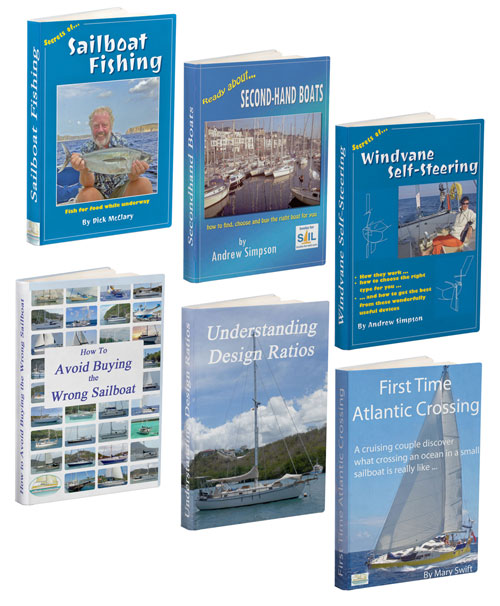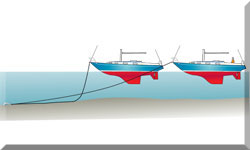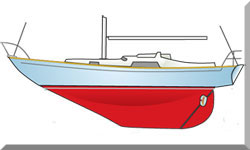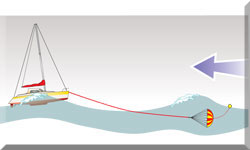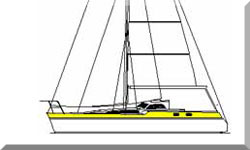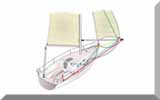- Home
- Offshore Sailing
- Sailboat Flag Etiquette
- Passage Plan
"Crafting Your Offshore Passage Plan: A Step-by-Step Guide."
If you’re a seasoned sailor, you already know that having a good passage plan can make all the difference out on the water. A strong plan not only keeps you on course but also helps you adjust when the weather changes and navigate safely through tricky waters. The process can be broken down into four simple steps that naturally flow into one another, making your journey easier to manage.
1. Appraisal: First, start by gathering all the details you need. Check the weather forecast using your favorite apps or trusted websites. Look at tide charts to understand how the water will move and study currents that might affect your course.
While you’re at it, don’t forget to search for any hazards, like rocks or shallow areas, and be aware of busy shipping lanes. Chatting with fellow sailors can also give you extra tips or updates about the route. All this information helps you build a strong foundation for your plan.
2. Planning: Next, take all that information and map out your route. Begin by marking safe spots on your chart; these become your checkpoints along the way. It’s wise to look at several route options.
Sometimes the shortest path isn’t the safest, so consider the wind, tides, and any hazards you noted. Keep your plan flexible—sketch your course in a way that makes it easy to adjust. This step is like drawing a road map for your journey, ensuring you have a clear guide to follow.
3. Execution: With your route in hand, it’s time to put your plan into action. When you set sail, stick to the path you’ve mapped out. However, the sea is full of surprises, so always keep your eyes open. Keep an eye on the sky and the water as you travel, and be ready to change course if the weather shifts or you come across something unexpected. This part is all about combining your careful planning with your own experience and instincts.
4. Monitoring: As you sail, it’s important to stay on track by regularly checking your instruments. Look at your compass, GPS, and other tools to make sure you’re where you should be. Revisiting your plan now and then helps catch any small deviations before they grow into bigger issues. It also feels reassuring to update your plan if conditions change. Consider reaching out to a friend or fellow sailor to let them know your progress—it’s a small gesture that adds extra safety to your journey.
By following these four steps, you create a strong and flexible passage plan. You start with gathering all the necessary details, then map out a safe and adaptable route, follow that plan with confidence, and continuously check your progress along the way. With this approach, you’ll be ready for whatever the sea sends your way.
SOLAS Chapter V, part of the International Convention for the Safety of Life at Sea, emphasizes the importance of passage planning for all vessels. It outlines that a passage plan is essential for ensuring safety, efficient navigation, and environmental protection. The guidelines stress that every voyage should be carefully planned, taking into account factors like weather, tides, navigational hazards, and the vessel's capabilities.
The chapter also highlights the need for continuous monitoring during the voyage. This means keeping track of the vessel's progress and position, and being ready to adjust the plan if conditions change. SOLAS Chapter V applies to all ships on international voyages, and compliance with its requirements is crucial for maritime safety.
And yes, SOLAS Chapter V does apply to recreational sailing vessels, but with some flexibility. The regulations are designed to enhance safety at sea and apply to all vessels, including recreational ones, when they are proceeding to sea. However, the level of compliance required depends on the size and type of the vessel, as well as the nature of its voyage.
For example, smaller recreational boats or those not engaged in international voyages may not need to meet all the detailed requirements. That said, the principles of safe navigation and voyage planning outlined in SOLAS Chapter V are highly recommended for all sailors, regardless of the vessel type. These include checking weather forecasts, understanding tides, ensuring the vessel is seaworthy, and having a clear plan for the trip.
Here’s a simple and effective template you can use to create a detailed passage plan for your voyage:
A Passage Plan Template
Vessel Details
- Vessel Name:
- Call Sign:
- Registration Number:
- Type and Size of Vessel:
- Engine and Sail Information:
Voyage Overview
- Departure Port:
- Destination Port:
- Estimated Departure Date and Time:
- Estimated Arrival Date and Time:
Route Plan
- Waypoints: (e.g., Latitude and Longitude of each checkpoint along the route)
- Distance Between Waypoints:
- Total Distance:
- Navigational Hazards: (e.g., rocks, shallow areas, or busy shipping lanes to avoid)
- Preferred Route Type: (e.g., Rhumb line, Great circle route, or weather-optimized route)
Weather and Tides
- Expected Weather Conditions:
- Tidal Information for Departure and Arrival Ports:
- Tidal Streams Along the Route:
Safety Information
- Emergency Contact Numbers:
- Nearest Coastguard Station:
- Communication Tools: (e.g., VHF Radio frequencies, mobile phones, satellite phones)
- Safety Equipment Onboard: (e.g., lifejackets, flares, EPIRB)
- Alternate Ports/Anchorage for Emergencies:
Crew Details
- List of Crew Members and Roles:
- Emergency Responsibilities for Each Crew Member:
- Medical Information: (e.g., allergies, medications)
Fuel and Supplies
- Fuel Quantity and Estimated Consumption:
- Food and Water Supplies:
- Spare Parts and Tools:
Execution and Monitoring
- Departure Checklist: (e.g., engine check, navigation system test, safety equipment inspection)
- Monitoring Plan: (e.g., regular position checks, logging updates in the ship's log, monitoring weather conditions)
- Communication Plan: (e.g., check-in schedule with shore contacts, updates on voyage progress)
Logbook Notes
- Record of Departure Time:
- Weather Conditions at Departure:
- Updates at Each Waypoint:Significant Events During the Voyage:
- Arrival Details: (e.g., time of arrival, condition of vessel and crew)
You can print this out and fill it in before your trip, or adapt it into an electronic format using navigation apps or software. A detailed plan like this ensures safety, efficiency, and peace of mind on the water.
.........................
I wrote this article using GPT-4, OpenAI’s large-scale language-generation model, as a research assistant to gather information, summarize research findings, and provide suggestions for the content and structure of the article.
Dick McClary, creator and owner of sailboat-cruising.com
.........................
Recent Articles
-
Which Type of Boat Fridge Is The Most Efficient?
Apr 24, 25 05:06 AM
The top opening boat fridge is reputed to be more efficient than the front opening type, but that may not be the case - and here, amongst other boat refrigeration considerations, is why -
Multihull Autopilot Selection is Not Straightforward
Apr 19, 25 01:25 PM
Whether its for a catamaran or a trimaran, tiller or wheel steered, a multi hull autopilot must be endowed with specific performance characteristics... -
Wheel-Steering Autopilots: Your Questions Answered...
Apr 18, 25 03:45 PM
Whatever your question, you should find the answer here
